The 1975’s Matty Healy Lifts the Curtain on Band’s Biggest Tour Yet (EXCLUSIVE)
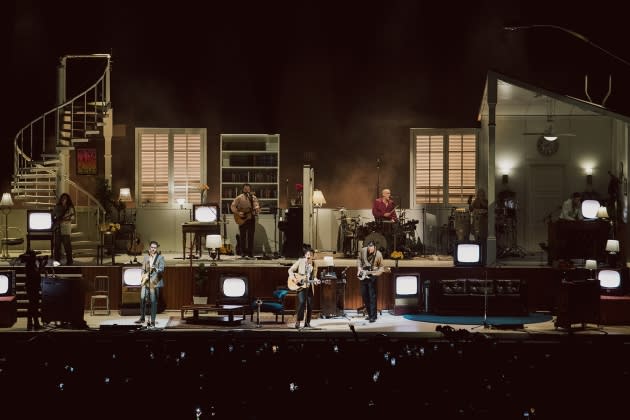
“I don’t feel like we’re big enough to play these rooms, and yet we are,” Matty Healy says sometime between selling out New York City’s Madison Square Garden and Los Angeles’ Kia Forum. The idiosyncratic 1975 frontman is pensive, lying on a hotel bed somewhere in Tennessee — or was it Texas? — speaking with Variety over Zoom.
The 1975’s “At Their Very Best” tour, in support of their new album “Being Funny in a Foreign Language,” has remained in the news and trending on Twitter since its Nov. 3 opening in Uncasville, Conn. With a life-size house for a set, two distinct acts and a narrative interlude, it’s a swing-for-the-fences, arena-ready show only a band at the height of their career could pull off. Yet Healy insists, “We’re never that comfortable with being really, really big.”
More from Variety
Nonetheless, Healy says doing a straight-up, no-frills rock show would be like “accepting some kind of defeat.” So instead, the band puts on a highly choreographed, yet loose-feeling production that, at times, feels more like a stage play than a concert. In the middle of each performance, the band exits the stage and leaves Healy alone with an oxygen mask. The singer then unbuttons his shirt, rubs his crotch and does push-ups in front of a stack of old TVs playing scatter-brained political content. Occasionally, he eats a slab of raw meat.
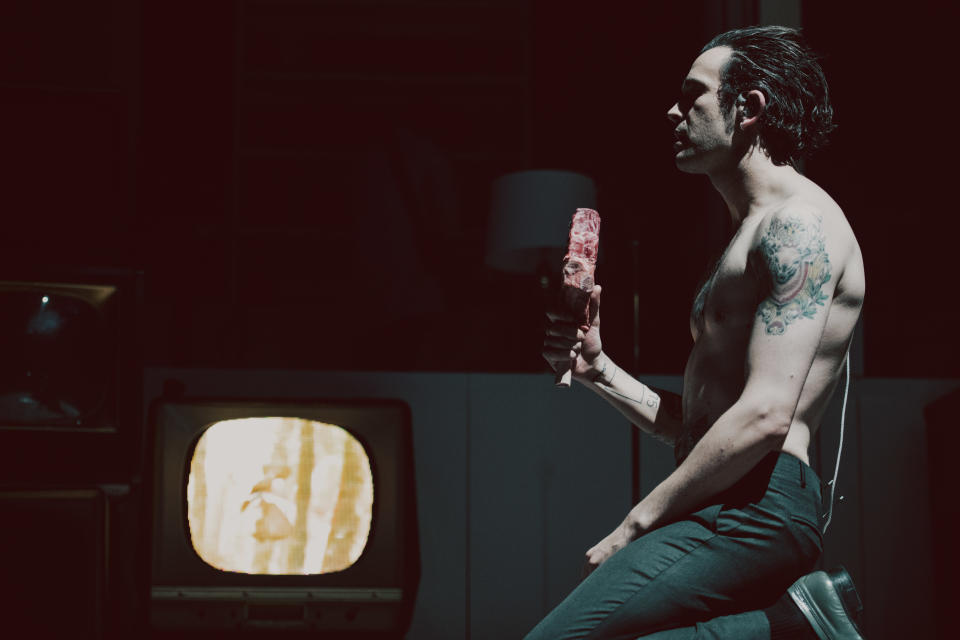
“The album felt like you were watching something, like you were a witness to something,” says Healy, who wrote the show and serves as its creative director. “And that was the idea with the show as well. We wanted it to be as experiential as the album was.”
When prodded about the meaning of the uncooked T-bone, he pauses and answers the question with a question: “Did you see all the conversation asking if it was real meat or not? I can’t imagine how difficult it would be to fabricate meat. I’d probably be more worried about eating some weird prop.”
Healy, you quickly get the sense, is less interested in breaking down the specifics of this performance than the idea of performance itself.
“The whole conversation of ‘Do I know that I’m a rock star, do I accept that I’m a rock star, is that okay to do?’ has been going on since my second album when I had the song ‘Love Me,’” Healy says, referring to the 2015 track he once said was about “a lack of self-awareness.” “There’s this redemptive rock star who reveals himself in the middle of the show who kind of saves the show, embracing a responsibility. But then again, how performative is that? I don’t really know.”
For as confident as he is onstage — introducing the 1975 as “the greatest band on the planet” or proclaiming, “We just keep getting better!” during the second act — Healy isn’t shy about his insecurities.
“Some nights I feel really exposed,” he says of the tour. “In New York, I didn’t feel that exposed, so I was happy to do almost six minutes onstage by myself. But when I played the other night, I was like, ‘I don’t feel comfortable enough in my own skin.’ But then I told people that. So it’s become this meta narrative about what’s happening with me.”
The “At Their Very Best” tour has evolved throughout its North American run, from altered setlists to surprise guest cameos from Phoebe Bridgers and Bleachers. Last week, the band began decorating the house with twinkle lights and a Christmas tree. In Las Vegas, Healy brought a fan onstage and proceeded to (consensually) make out with her during “Robbers.” The next night in San Diego, he snogged a male fan. Midway through the tour, the 1975 was regularly trending on Twitter and sparking headlines like “Creepy behavior or pop performance?” In L.A., where dozens of fans brought signs that read, “Kiss Me, Matty” and “Spit in My Mouth,” Healy opted to lock lips with bassist Ross MacDonald instead.
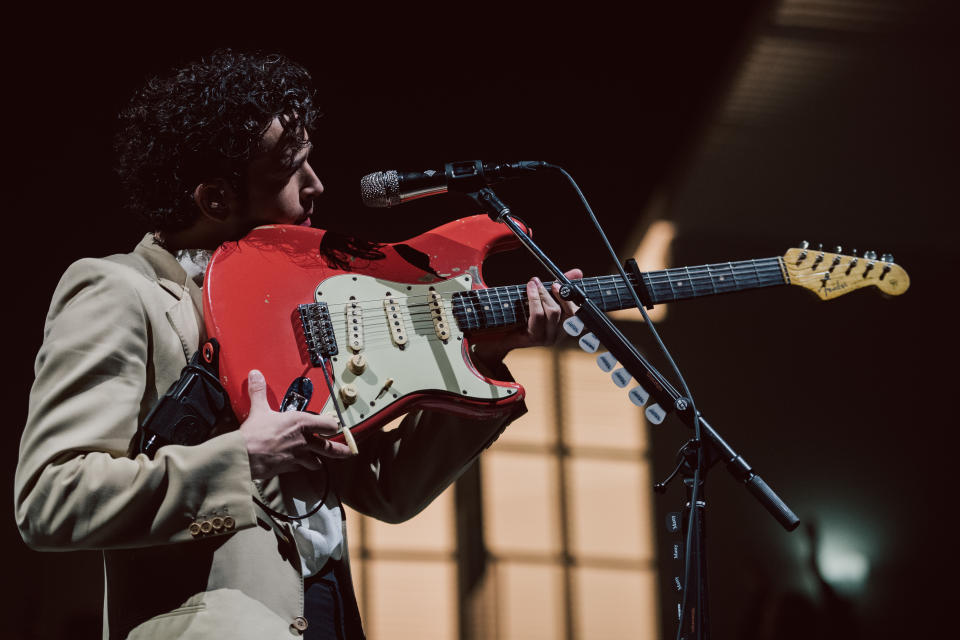
Speaking with Healy before he went on a romantic rampage – and he declined to comment afterward – one quote that sticks out in hindsight is, “I’m always just trying to do what the 1975 is, which is at least interesting.”
That spirit is also reflected in the structure of the show, which opens with seven consecutive songs from “Being Funny,” an album that came out just weeks before the tour began. Devoting the first hour-hour of an arena show to new material is a bold choice, and one that Healy didn’t necessarily process until he first took the stage.
“The first night, in Connecticut, I was met with the reality of what 8,000 people looked like,” he says. “And that’s a bit like, ‘Oh, shit. I’ve totally just been thinking about our fans and the people I see on the internet.’ I’m not thinking about Gary who’s only heard whatever song.”
He continues, “I was like, ‘Is this way too off the deep end?’ But I was also like, ‘Fuck it. This is my show. People come to see the show.’ They’ve not necessarily come to see fucking ‘Chocolate.’ So I think everyone is left, if not happy, then pretty interested.”
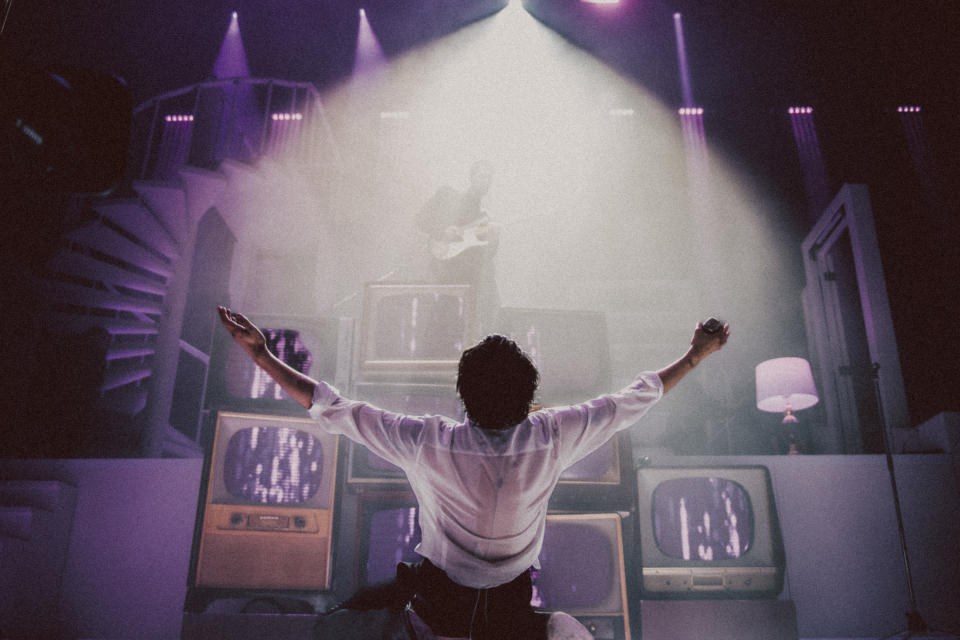
Looking back on almost 10 years since their first major tour, the band stresses that this cycle is “the polar opposite of what we’ve done before.” Tobias Rylander, who designed the show, set and lighting, tells Variety, “Up until the moment that curtain dropped on the premiere night, we had no idea if it was going to work or how people were going to welcome it. All the shows these days tend to be about LED screens and lights as big as you can get. And we’ve just gone the other way.”
When they burst onto the scene with their 2013 self-titled debut album, the 1975 had a monochromatic visual identity. The black background and neon white rectangle became the band’s iconic symbol, and their live show was centered around it, with volumetric video projection used as its main light source.
The band’s 2014 staging, with a stark background of five neon-lit rectangles, “was one of the first shows that people talked about as being Instagram-ready,” says Rylander, who has worked with the 1975 for nearly a decade. “We put a lot of time and effort into making sure that anyone could take a photo of that show from anywhere in the audience and it would be a great shot.” The following tour, the band catered to social media even more with a portrait-scale show: “The set had more or less the form and shape of an iPhone when you think of it.”
But this time around, the 1975 opted for the opposite extreme, trading a bright, digitally lit stage for a more organic, living and breathing set. The band ditched the Tumblr-era black and white for warm, homey tones.
Yet according to Healy, the idea of performing out of a literal home “didn’t seem like that obvious of a conclusion until I got there.”
“When Matthew was making the album, he was talking about how he wanted the listener to feel as if they were witnessing something,” says the 1975’s manager Jamie Oborne, who also founded and owns Dirty Hit Records. “He wanted an experience of intimacy in the record, so naturally when we started thinking about the show, he wanted the same type of thing.”
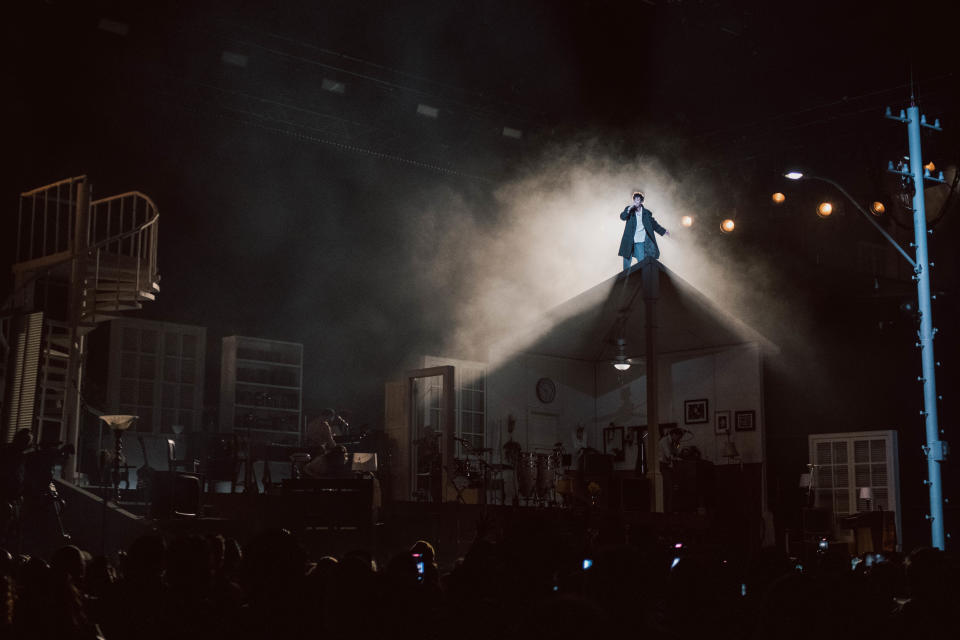
There’s still, of course, plenty of photo-worthy moments, like when Healy delivers an impassioned “I Like America & America Likes Me” from the roof of the house, or falls to his knees under the giant street lamp during “Fallingforyou.”
The goal, Rylander says, is to create such a strong visual identity for not only each tour but also each song, so that fans can see a photograph from the show and be able to discern exactly when it was snapped.
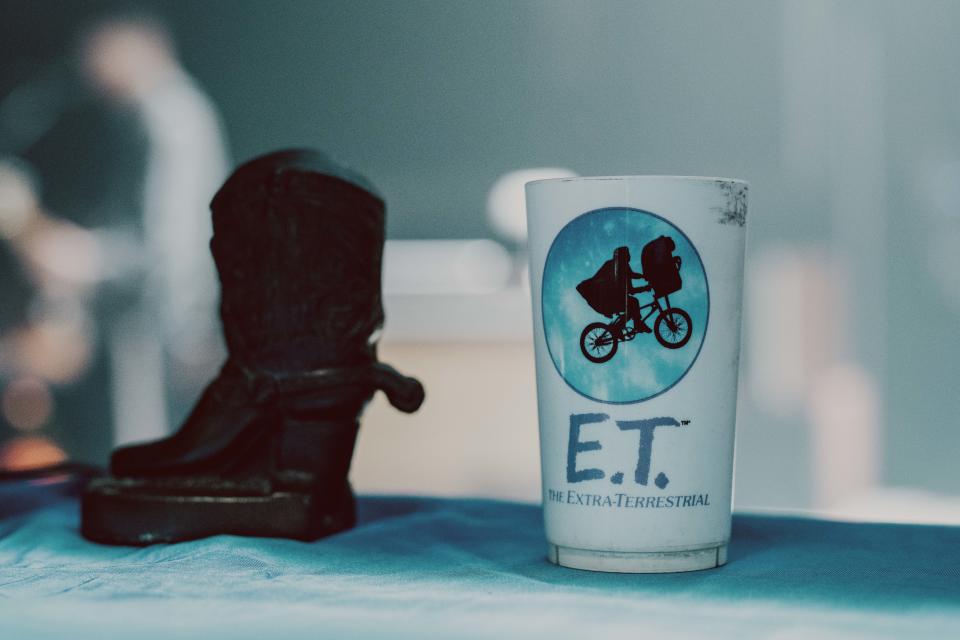
The “At Their Very Best” tour is also filled with Easter eggs for eagle-eyed fans to discover. The house and street lamp are inspired by the artwork for fan-favorite single “Fallingforyou,” and every song on the setlist gets a dedicated lyric book on the house’s bookshelf. There’s also props from 1975 music videos — like Healy’s beanie from “Sincerity Is Scary” — as well as relics from Healy’s favorite movies — like the “E.T.” souvenir cup and Ohio blue tip matches from the Adam Driver film “Paterson.” In case it wasn’t cozy enough, the walls are decorated with framed family photos.
There’s also, of course, a bunch of clues that even Reddit hasn’t spotted yet, says Rylander, who won’t even tell me the still-hidden references for fear of spoiling the mystery.
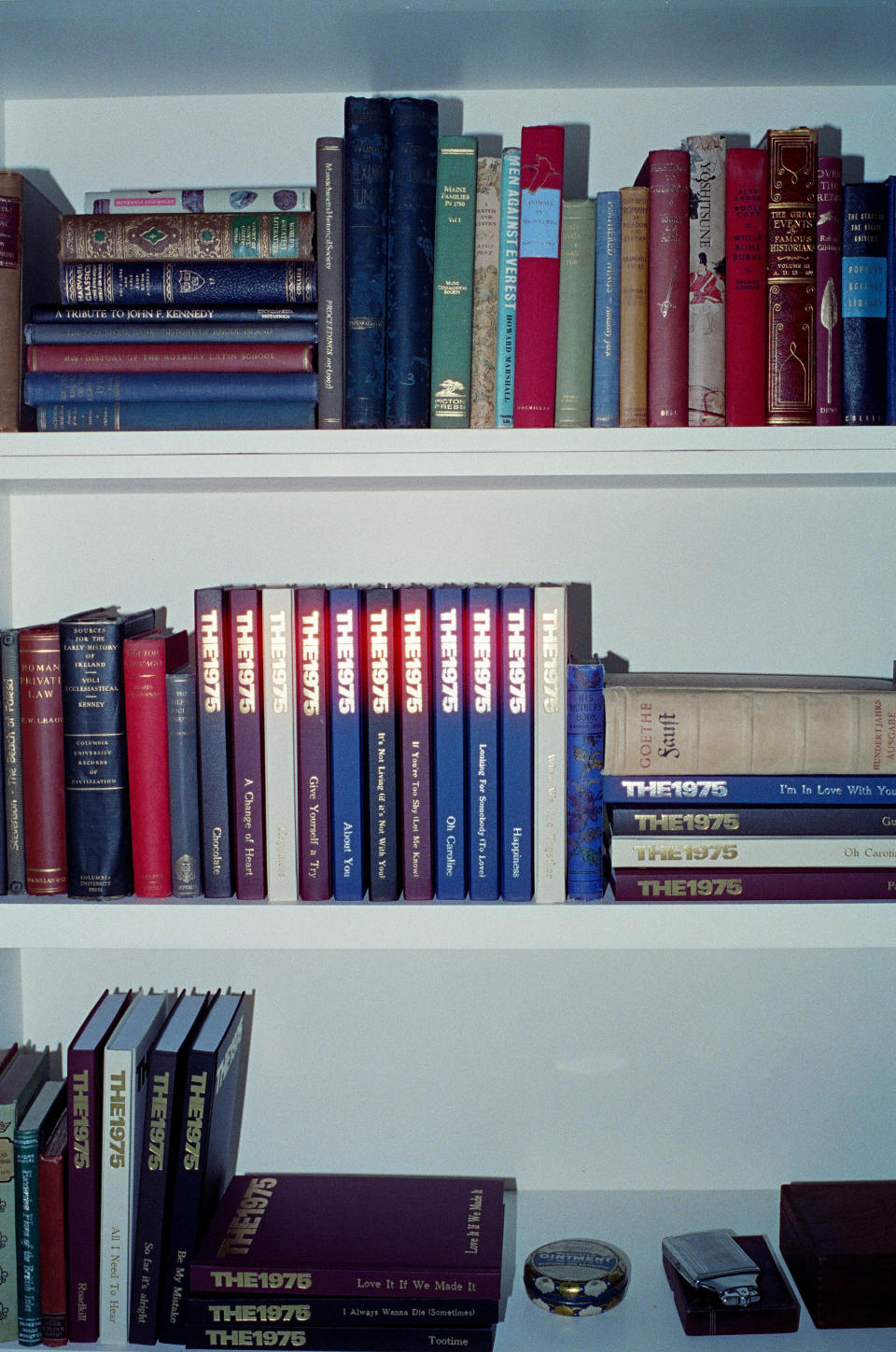
Describing the aesthetic inspirations of the show, stylist and art director Patricia Villirillo cites “Blue Velvet,” “The Talented Mr. Ripley” and photographer Stephen Shore. In decorating the set, she aimed to create a vibe that feels nostalgic but not dated. Villirillo also created a “capsule wardrobe” for each band member, who she says have become so accustomed to their black tailored suits that they’ve started wearing them offstage — yes, even on the bus. “I’m not joking,” she says. “They love it so much, and they’re so comfortable in it that it became a part of them.”
Boringly enough, Rylander says the biggest challenge to producing a show of this stature is the economics of the post-pandemic touring industry. “Everything is twice if not three times as expensive as they were when we started,” he says. “There is not a lot of gear out there. We’re much more restricted to trucking space and logistics. So we’ve really gone from maximalism to minimalism.”
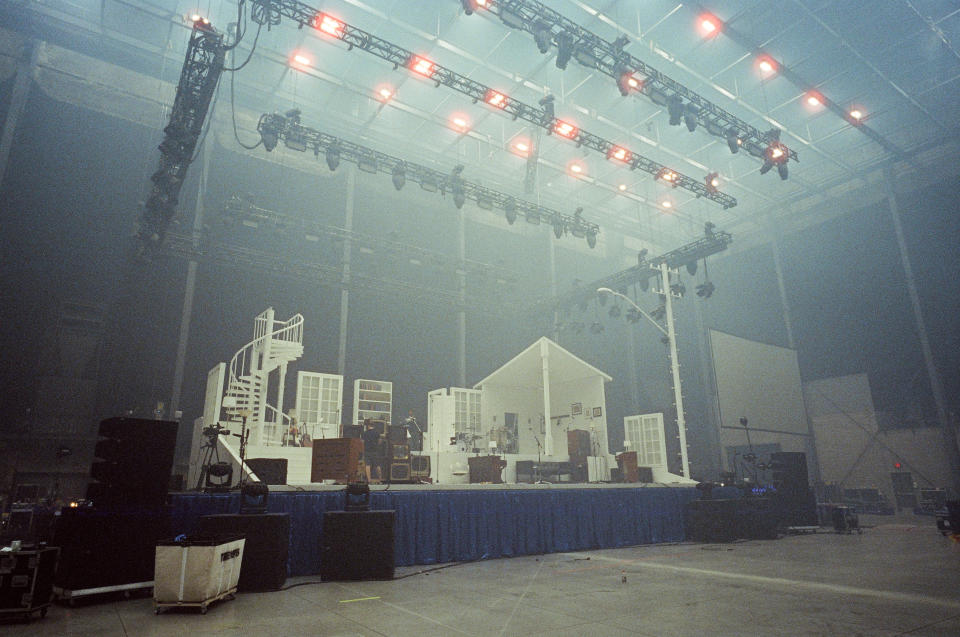
Oborne avoids divulging specific numbers, but assures that this tour is “costly.” The house, which is fully furnished and functional with various rooms, is big enough to fill an arena stage and comfortably fit eight band members — drummer George Daniel, guitarist Adam Hann, bassist MacDonald, plus touring musicians Jamie Squire, John Waugh, Polly Money and Rebekah Rayner. The set also has to be collapsed and rebuilt each show, travelling from city to city with 65 staffers in nine trucks. Rylander says the band aimed to create the smallest amount of landfill as possible for this tour, pointing out that the skeleton of the house is modular and the pieces can be “put back on the shelf” after the tour wraps up.
“It sounds very basic, but to have a structure that you can take apart and reuse in another show is really groundbreaking,” says Oborne, comparing the house to a Meccano set. “It eliminates a lot of waste.”
He adds, “In late-2018 and 2019, there was a huge groundswell of climate activism, and we realized that we had to do things a little bit differently in the live arena because it was such a wasteful environment.”
During the tour for their third album, “A Brief Inquiry Into Online Relationships,” Oborne says he and Healy became “quite impacted by the amount of stuff we were taking around the world.” (As fans might recall, the band’s next album would open with a spoken-word track by climate activist Greta Thunberg.) So they sought out to make a show that was “more fit for the future.”
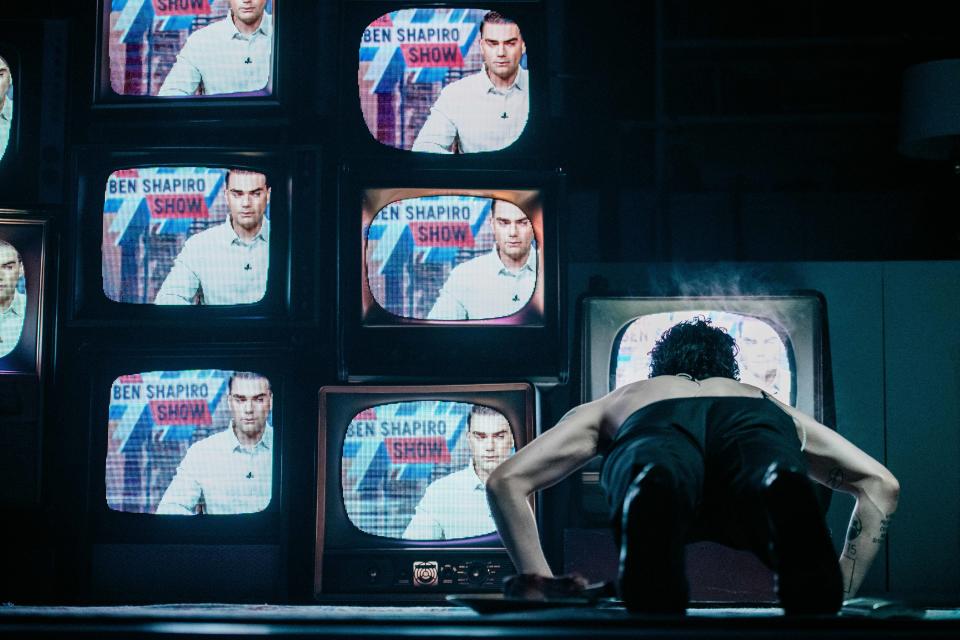
While the show itself is not inherently political, a high point of the set is the 2018 anthem “Love It If We Made It,” which has lyrics referencing police brutality, the Syrian refugee crisis and Donald Trump. Elsewhere in the show, the onscreen televisions flash between footage of Ben Shapiro, Kamala Harris, Vladimir Putin, Mark Zuckerberg and more. It’s meant to mimic a social media algorithm.
The show’s depiction of cultural overconsumption is, in part, inspired by Bo Burnham, whose song “That Funny Feeling” played prominently before the band walked onstage at MSG. Of his creative parallels with the comedian, Healy says, “We were kind of singing from the same hymn sheet already. We talk a lot about these ideas and about this kind of stuff. Having Bo in my ear has definitely affected the show.”
Burnham’s pandemic special “Inside” and the 1975’s “Brief Inquiry” similarly explore the bleakness of the internet age. “Since I made ‘A Brief Inquiry Into Online Relationships,’ my algorithms have been fucked,” Healy says. “[My social media] doesn’t know if I’m a black pill, red pill, blue pill, beta… it doesn’t know what is going on with me. I’m constantly getting a flurry of quite objective but extreme-sided information. Being a man who’s on the left traditionally, but now who is in their 30s making art, it’s an interesting place to be. I spend a lot of my time by myself investigating that. And this show is a result of that.”
Adds Rylander: “Matthew is a brilliant entertainer, and he’s very welcoming into his house. But I don’t think that you could put him on a stage without him actually taking the opportunity to comment on the world that’s going on outside of the venue walls. It’s not all escapism, even if it seems that way.”
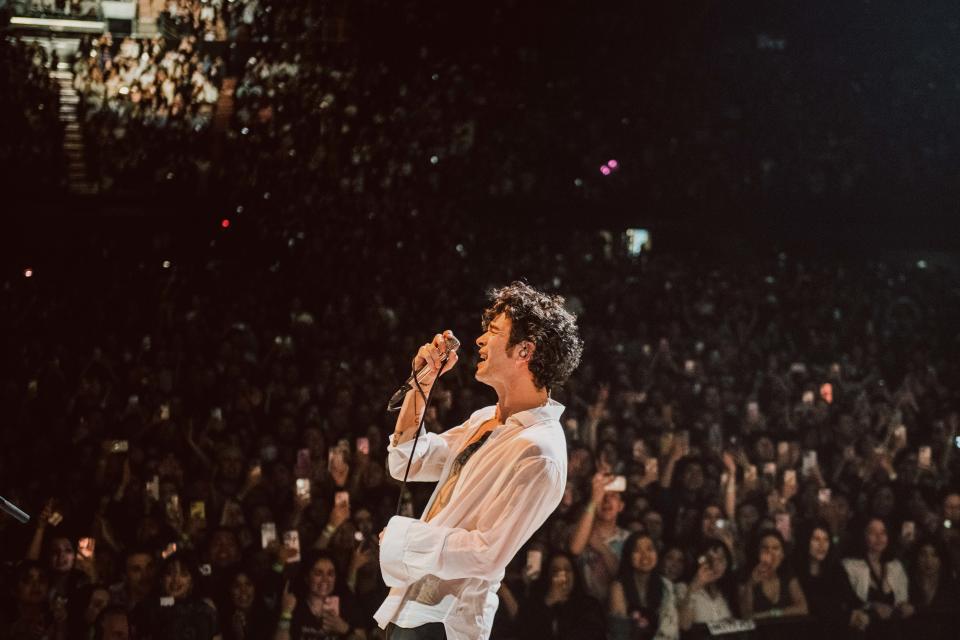
Wrapping up the North American leg this week in Pittsburgh, Penn., the 1975 are gearing up to bring the house home, in the U.K. and Ireland, starting Jan. 8 in Brighton. Looking ahead, Oborne says they’re eyeing festivals in the spring and summer.
“We’ve designed a completely different festival show,” he reveals. “It has a different setlist, but it still has echoes of the main show.”
Regarding the reaction to the tour, Healy says he doesn’t seek out comments but has read reviews and been sent various responses. What has surprised him most is that the parts of the show he thinks are “off the fucking deep end” have seemed to be resonating the most with fans.
“Sometimes I’ll write a lyric and I’ll be like, ‘No one’s gonna fucking get this because this is so me.’ And that’ll be the first fucking tattoo that somebody gets,” Healy says. “The more ‘out there’ I think I’m being, the more relatable I tend to be. People are leaving this show feeling a real solidarity with each other.”
But above all the metaphor and “black pill performance art,” as he called it in New York, Healy recognizes that people go to concerts for a good time.
“It’s a party at the end of the day,” he says. “If you’re not gonna play songs that are fun, then that’s pretty boring.”
Best of Variety
Sign up for Variety’s Newsletter. For the latest news, follow us on Facebook, Twitter, and Instagram.

